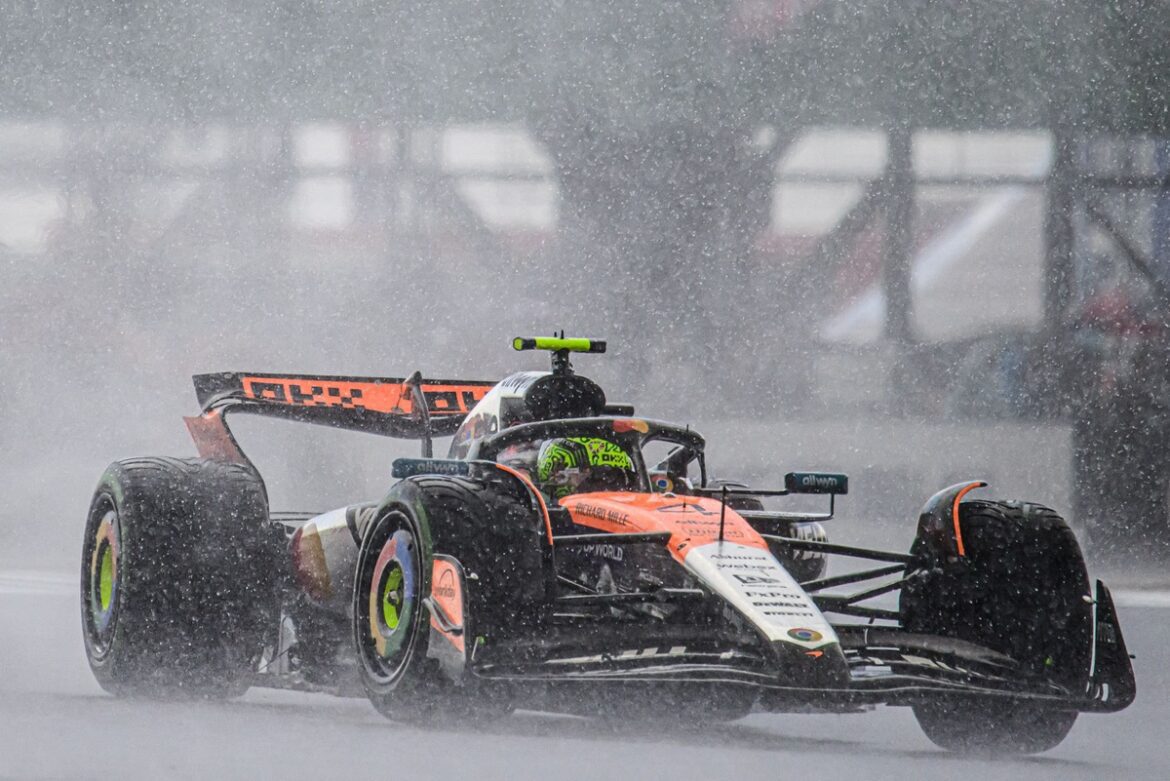The Challenges and Developments of Full Wet Tires in Formula 1
In recent years, witnessing full wet tires in action during a Formula 1 race weekend has become increasingly uncommon. This rarity primarily stems from visibility issues. When rain intensifies, the amount of water on the track can create significant spray, which severely hampers the drivers’ ability to see the road ahead. The FIA (Fédération Internationale de l’Automobile) has made efforts to enhance visibility with the latest generation of F1 cars, yet the results have not met expectations. The persistent visibility problem in wet conditions remains a major challenge, particularly in light of unsuccessful experiments with wheel covers intended to mitigate this issue.
The Preference for Intermediate Tires
Another significant factor affecting the usage of full wet tires is the performance characteristics of the tires themselves. Many drivers, including the reigning world champion, have expressed a tendency to prefer staying on intermediate tires for as long as possible, even when the conditions warrant the full wet option. This preference raises questions about the effectiveness and reliability of full wet tires under challenging weather conditions.
To tackle this issue, Pirelli, the official tire supplier for Formula 1, is actively working on refining the crossover point between intermediate and full wet tires. The objective for the 2025 season is to establish this crossover point at approximately 115-116% of the dry lap times. However, the current situation has shown that this threshold has often hovered around 118%, as noted by Mario Isola, Pirelli’s head of motorsport.
Drivers’ Complaints and Tire Development
The challenges surrounding full wet tires extend beyond just the amount of water on the track and the crossover point. In an exclusive interview, Isola shed light on an often-overlooked issue that has emerged in recent years regarding drivers’ feedback on wet tires. According to Isola, the focus had previously been on addressing aquaplaning, which drivers frequently mentioned. However, upon further analysis, it became evident that the drivers’ complaints were more closely related to a loss of grip while cornering rather than the actual phenomenon of aquaplaning.
Isola elaborated on this by explaining that the design of the tire tread plays a crucial role. "In our efforts to combat aquaplaning, we had been increasing the number of grooves in the tires," he said. "While this approach was aimed at enhancing water displacement, it inadvertently resulted in smaller tread blocks that could shift more easily. This movement generates heat, leading to tire overheating, which ultimately causes a loss of grip." This unexpected overheating issue has been at the heart of many drivers’ frustrations with full wet tires.
Modifications for 2023
In response to these insights, Pirelli made some adjustments to the design of the wet tires for the current season. Isola revealed that they had modified the tread pattern slightly to combat overheating issues associated with the current tire construction and compound. This change aims to minimize the movement of the tread blocks, thereby reducing the risk of overheating during races, particularly on circuits that exert higher demands than those Pirelli typically uses for testing, such as Fiorano and Paul Ricard.
Looking Ahead to 2026
The upcoming overhaul in regulations set for 2026 presents an opportunity for Pirelli to introduce a completely new range of tires, potentially enhancing performance and safety in wet conditions. Isola outlined the primary goal for the 2026 season, which is to further improve the crossover point between intermediate and full wet tires. This advancement will allow teams to make tire choices without experiencing a drop in performance, providing a greater strategic advantage during races.
Additionally, Pirelli is considering the implementation of an entirely different tread pattern for the new tires, aimed at addressing the concerns raised by drivers regarding grip and performance in wet conditions. These innovations are expected to reflect a deeper understanding of the challenges posed by wet weather racing.
Testing Limitations and Future Solutions
A recurring topic in discussions surrounding Formula 1’s wet tires is the limited testing opportunities available to teams and drivers. While complaints about the full wet tires are common, Pirelli emphasizes that developing these tires is inherently challenging due to existing restrictions. Isola pointed out that they cannot conduct tests on high-severity tracks under wet conditions, which complicates the development process.
However, Pirelli has developed contingency plans for testing at various circuits like Barcelona and Jerez. Whenever weather permits, they always have wet tires on hand to maximize testing opportunities, even if it means adapting the testing program on short notice. While these tests may not occur in a controlled environment—without the use of sprinklers to simulate consistent wet conditions—they still offer valuable insights into tire performance during real racing scenarios.
Conclusion
As Formula 1 continues to evolve, the development of full wet tires remains a critical area of focus for both Pirelli and the teams. The interplay between visibility challenges, driver preferences, and tire performance will shape the future of wet weather racing. The insights gained from ongoing research and development will not only enhance the racing experience but also ensure the safety of drivers on the track. As we look forward to the innovations of 2026, the commitment to improving tire technology in wet conditions will undoubtedly play a pivotal role in shaping the future of Formula 1 racing.
